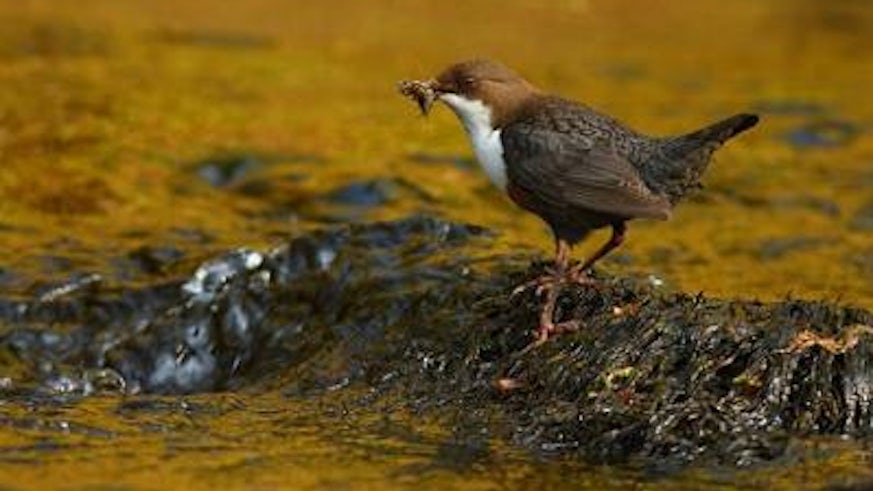Modern-day colliers' canaries
22 July 2013

Much like the miners' canaries of yesteryear, birds are once again warning of potentially damaging substances in the former South Wales coalfield.
Whereas deep miners once carried caged canaries to warn of suffocating gases, today's equivalent comes from detailed chemical analysis of pollutant residues in the eggs of wild birds such as the dipper. These thrush-sized birds are the world's only song-birds to feed directly on river insects and they have proven to be excellent indicators of river health.
Research* carried by scientists at the School of Biosciences shows that dipper eggs along urban South Wales rivers contain some pollutants at levels, on average, over four times greater than in adjacent rural rivers and are among the highest ever found in songbirds.
The pollutants – such as PCBs and PBDEs** – can persist in the environment for long periods and are among those believed to contribute to hormonal irregularities and abnormal development in fish.
Some of these pollutants are a legacy of past industrial activity but others, such as PBDEs – widely used as flame retardants in building, industrial and domestic materials – might still be increasing.
This work is important in showing that such substances can find their way into water, particularly near towns and cities, and accumulate in river wildlife.
*Morrissey, C. A., Stanton, D. W., Pereira M. Glória, Newton, J., Durance, I., Tyler, C. R. and Ormerod, S. J. (2013) Eurasian dipper eggs indicate elevated organohalogenated contaminants in urban rivers. Environmental Science and Technology http://pubs.acs.org/doi/pdf/10.1021/es402124z
** Polychlorinated biphenyl and Polybrominated diphenyl ethers